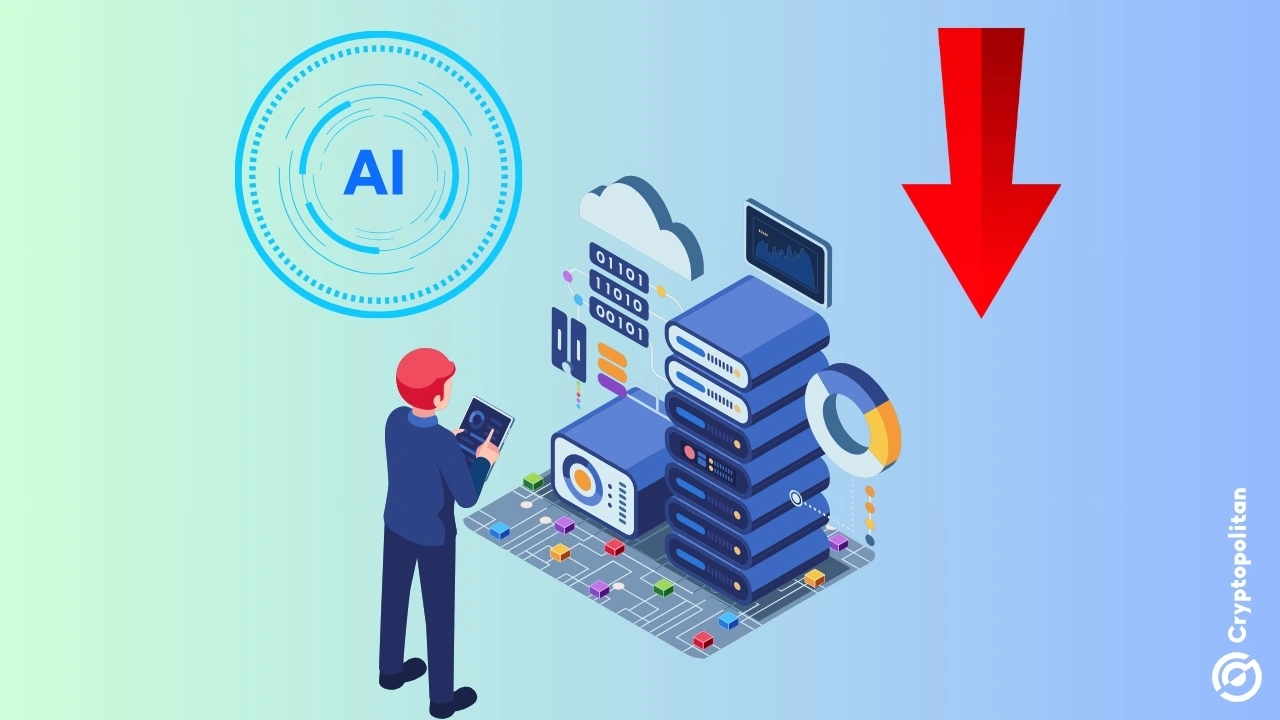Big tech is on a building spree. Across America, companies are dumping billions into data centers—massive, climate-controlled, power-hungry structures that house servers and keep the engines of artificial intelligence running 24/7.
The numbers are off the charts. Private spending on these data fortresses has shot up to nearly $30 billion annually, more than doubling from last year, according to the Census Bureau.
AI’s rise (led by tools like OpenAI’s ChatGPT) triggered this surge as companies scrambled to support the data demands of a tech race that’s only speeding up.
AI applications are expensive to run. They require tons of processing power and data storage, which means more infrastructure and, of course, way more cash.
And right now, data centers are eating up more budget dollars than anything else in the corporate building category—more than hotels, retail spaces, and even leisure facilities. These facilities are now America’s biggest construction obsession.
Money manager KKR & Co. expects global data center spending to climb to a staggering $250 billion annually, with the U.S. at the forefront. Companies everywhere are digging deep to build the storage and processing power needed to keep up with the AI gold rush.
The electric appetite of AI: Data centers demand more power
If data centers were people, they’d be the ones with a never-ending hunger for electricity. And it’s a problem. With each new facility, the energy demands of the tech sector skyrocket. Massive tech firms like Google, Amazon, and Microsoft already draw serious power to keep these operations running.
But data centers don’t just need a lot of electricity—they want exclusive access. They want priority, sometimes even their own power sources.
It’s making utility companies and regulators nervous, especially with the risk that this consumption could push up energy prices for regular Americans and small businesses just trying to keep the lights on.
Just last week, the Federal Energy Regulatory Commission (FERC) denied Amazon’s request to power a new data center using energy from a neighboring nuclear plant. This decision is only the beginning. Energy regulators are starting to push back as they try to balance the needs of big tech with the everyday consumer.
TSMC’s chip sales signal AI’s steady demand
The race for AI is also about chips — advanced processors that power these facilities and allow AI to compute and crunch data at mind-bending speeds. Leading this sector is Taiwan Semiconductor Manufacturing Co. (TSMC), which supplies chips to giants Nvidia and Apple.
In October, TSMC reported a 29.2% increase in sales, although growth has started to slow compared to the explosive pace of earlier months. The company’s monthly sales hit NT$314.2 billion (about $9.8 billion), down from a growth rate that regularly topped 30% between March and September.
Despite this dip, TSMC remains the go-to provider for the world’s AI hardware, with analysts projecting a 36.1% sales increase for the final quarter. Its stock has soared more than 80% this year as demand from American tech companies remains red hot.
These firms are banking on chips that can handle the workload AI applications demand. Without TSMC and its silicon-driven engines, the data center buildout would hit a wall.
But this dependence on one manufacturer also has investors—and the entire AI industry—wondering just how long the craze will last. For now, though, demand isn’t slowing.
The political dance: AI companies avoid election missteps
In the middle of all this tech frenzy, AI companies found themselves in the political spotlight during the recent U.S. election. As AI tools become more integrated into everyday life, questions arise about their reliability, especially when it comes to something as high-stakes as politics.
Fears of AI chatbots messing up election information or, worse, spreading misinformation were real. Most companies, aware of the risks, played it safe.
Rather than risk their chatbots getting facts wrong, OpenAI’s ChatGPT redirected users to trusted news sources like Reuters, and Google limited its AI to basic responses around election topics. Nobody wanted a repeat of the social media misinformation disasters from past elections.
But not every AI company took the conservative route. Perplexity, a smaller AI startup, decided to go all-in. Partnering with the Associated Press and Democracy Works, Perplexity embedded a live election information hub in its app, complete with real-time voting results and detailed candidate info.
The result? Perplexity’s app logged over 4 million page views from election night alone. It was a bold move, and it paid off. The app’s accuracy earned praise, showing that some AI firms are ready to push boundaries, even with politics.
Yet, even with most of the major players staying cautious, there were still a few slip-ups. Grok, a chatbot from Elon Musk’s xAI, prematurely declared Trump the winner in several states. Google’s AI mistakenly sent users searching for voting locations for Kamala Harris to Harris County, Texas.





